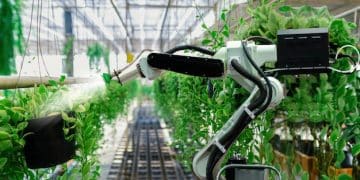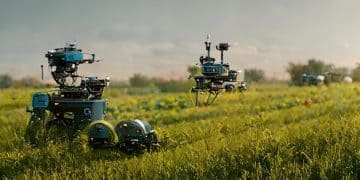The Future of Autonomous Tractors: Navigating the Next 5 Years
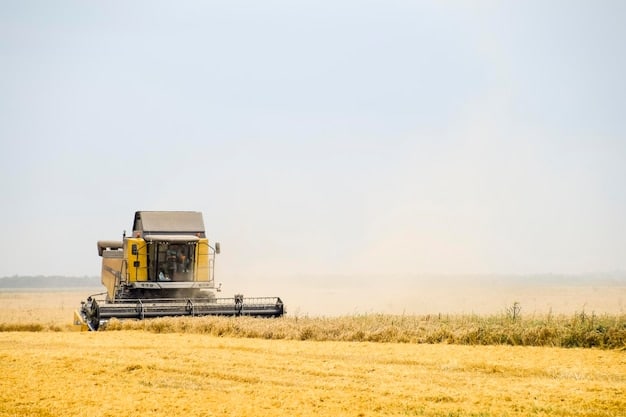
The future of autonomous tractors involves significant advancements in technology, increasing efficiency and sustainability in farming practices over the next five years, presenting both opportunities and challenges for the agricultural industry.
The agricultural landscape is on the cusp of a revolution, driven by the relentless march of technology. Prepare to explore the future of autonomous tractors, where innovations are set to redefine farming as we know it within the next five years.
Autonomous Tractors: Reshaping the Future of Farming
Autonomous tractors represent a significant leap forward in agricultural technology, promising to enhance efficiency, reduce labor costs, and improve overall farm management. These sophisticated machines are equipped with advanced sensors, GPS technology, and artificial intelligence, enabling them to operate without human intervention.
Over the next five years, we can expect to see further advancements in autonomous tractor technology, including improved navigation systems, enhanced data analytics, and increased integration with other smart farming tools. This will lead to more precise and efficient farming practices, ultimately boosting productivity and profitability for farmers.
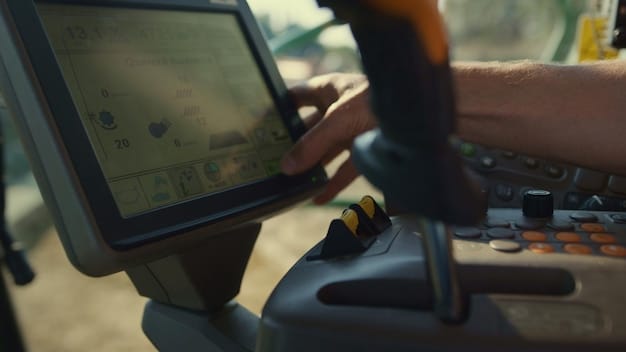
Key Technological Advancements
Several technological advancements are driving the development and adoption of autonomous tractors. These include:
- Enhanced GPS Technology: Provides precise navigation and positioning, allowing tractors to operate within defined areas with minimal human supervision.
- Advanced Sensors: Collect data on soil conditions, crop health, and environmental factors, enabling tractors to make informed decisions in real-time.
- Artificial Intelligence: Powers the decision-making capabilities of autonomous tractors, allowing them to adapt to changing conditions and optimize performance.
These technologies work together to create a highly efficient and data-driven farming system, where autonomous tractors play a central role in optimizing resource utilization and maximizing crop yields.
In conclusion, autonomous tractors are poised to transform the agricultural industry by offering a more efficient, sustainable, and data-driven approach to farming. As technology continues to advance, we can expect to see even greater adoption of these machines in the years to come.
The Benefits of Autonomous Tractors: Efficiency and Sustainability
The adoption of autonomous tractors brings a multitude of benefits to the agricultural sector, primarily focusing on enhanced efficiency and improved sustainability. These benefits are not only transforming farming practices but also contributing to a more resilient and environmentally friendly agricultural system.
By automating many of the tasks traditionally performed by human labor, autonomous tractors can optimize resource utilization, reduce waste, and minimize the environmental impact of farming operations. This shift towards greater efficiency and sustainability is critical in addressing the challenges of feeding a growing global population while preserving natural resources.
Improved Efficiency
Autonomous tractors offer significant improvements in efficiency compared to traditional farming methods. These machines can operate around the clock, without the need for breaks or rest, allowing for continuous and timely completion of tasks such as planting, spraying, and harvesting.
- Reduced Labor Costs: Automation reduces the need for manual labor, lowering operating costs and freeing up human resources for other tasks.
- Optimized Resource Utilization: Precise application of fertilizers, pesticides, and water minimizes waste and reduces environmental impact.
- Increased Productivity: Continuous operation and optimized performance result in higher crop yields and faster turnaround times.
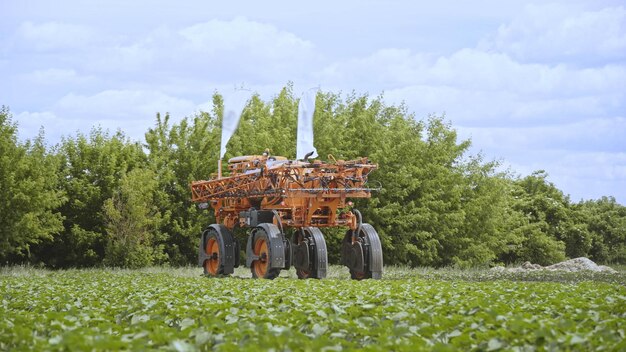
These improvements in efficiency translate to greater profitability for farmers and a more sustainable use of resources, contributing to a more resilient and productive agricultural system.
In conclusion, autonomous tractors are revolutionizing farming practices by enhancing efficiency, reducing waste, and minimizing environmental impact. Their ability to operate continuously and optimize resource utilization makes them a valuable asset for farmers seeking to improve productivity and sustainability.
Challenges and Concerns: Addressing the Roadblocks
While the future of autonomous tractors looks promising, several challenges and concerns need to be addressed to ensure their widespread adoption and successful integration into farming operations. These challenges range from technological limitations to economic considerations and ethical implications.
Addressing these roadblocks will require collaboration between technology developers, policymakers, and farmers to create a supportive ecosystem that fosters innovation, promotes responsible adoption, and mitigates potential risks. This proactive approach is essential to unlocking the full potential of autonomous tractors and ensuring their long-term success.
Initial Investment Costs
The high initial investment costs associated with autonomous tractors can be a significant barrier to adoption, particularly for small and medium-sized farms. These costs include the purchase price of the tractor, as well as the cost of the necessary infrastructure and support systems.
To overcome this challenge, manufacturers and policymakers need to explore innovative financing options, such as leasing programs, government subsidies, and shared ownership models. These initiatives can help make autonomous tractors more accessible to a wider range of farmers, regardless of their financial resources.
Data Security and Privacy
Autonomous tractors generate vast amounts of data on crop health, soil conditions, and environmental factors. Protecting this data from cyber threats and ensuring the privacy of farmers is crucial for maintaining trust and promoting responsible data management practices.
Implementing robust cybersecurity measures, establishing clear data ownership policies, and providing farmers with control over their data are essential steps in addressing these concerns. These measures will not only safeguard sensitive information but also foster a more transparent and accountable data ecosystem.
In conclusion, addressing the challenges and concerns associated with autonomous tractors is essential for their successful integration into farming operations. By mitigating potential risks and promoting responsible adoption, we can unlock the full potential of these machines and pave the way for a more efficient, sustainable, and equitable agricultural system.
Regulatory Landscape: Navigating the Legal Framework
The regulatory landscape surrounding autonomous tractors is still evolving, with many jurisdictions grappling with how to address the unique challenges and opportunities presented by these machines. Establishing clear and consistent regulations is crucial for ensuring the safe and responsible deployment of autonomous tractors in farming operations.
These regulations should cover a wide range of issues, including safety standards, liability frameworks, data privacy protections, and environmental considerations. By providing a clear legal framework, policymakers can foster innovation, promote responsible adoption, and build public trust in autonomous tractor technology.
Safety Standards and Protocols
Establishing safety standards and protocols is paramount to ensuring the safe operation of autonomous tractors in farming environments. These standards should address issues such as collision avoidance, emergency shutdown procedures, and operator training requirements.
Collaborative efforts between regulatory agencies, industry stakeholders, and technology developers are essential to developing comprehensive and effective safety standards. These standards should be based on rigorous testing and validation, as well as ongoing monitoring and evaluation.
- Remote Monitoring: Implementing systems for remote monitoring and control of autonomous tractors.
- Emergency Shutdown: Ensuring reliable emergency shutdown mechanisms in case of malfunctions or accidents.
- Operator Training: Providing adequate training for operators to manage and oversee autonomous tractor operations.
By prioritizing safety and establishing clear protocols, we can minimize the risk of accidents and ensure the responsible deployment of autonomous tractors in farming operations.
In conclusion, navigating the regulatory landscape is a critical step in unlocking the full potential of autonomous tractors. By establishing clear and consistent regulations, policymakers can foster innovation, promote responsible adoption, and build public trust in this transformative technology.
The Impact on Labor: Workforce Transition and Skill Development
The adoption of autonomous tractors will inevitably have a significant impact on the agricultural workforce, leading to shifts in job roles and skill requirements. While some fear job displacement, others see an opportunity for workforce transition and skill development.
To mitigate potentialNegative impacts, it is crucial to invest in training programs and workforce development initiatives that equip workers with the skills needed to manage and maintain autonomous tractor technology. This proactive approach can help ensure a smooth transition and create new opportunities for agricultural workers.
Emerging Job Roles
While autonomous tractors may reduce the need for manual labor in some areas, they will also create new job roles in areas such as data analysis, equipment maintenance, and technology support. These emerging job roles will require a different skill set than traditional farming jobs, emphasizing technical expertise and problem-solving abilities.
By investing in training programs that focus on these emerging skill sets, we can help ensure that agricultural workers are prepared for the changing job market and can take advantage of new opportunities created by autonomous tractor technology.
In conclusion, the adoption of autonomous tractors will have a transformative impact on the agricultural workforce. By investing in training programs and workforce development initiatives, we can help ensure a smooth transition and create new opportunities for agricultural workers in the era of automation.
Future Trends: What Lies Beyond the Next 5 Years
Looking beyond the next five years, the future of autonomous tractors is full of exciting possibilities. As technology continues to advance, we can expect to see even greater levels of automation, integration, and data-driven decision-making in farming operations.
These future trends will not only transform the way we grow food but also contribute to a more sustainable, resilient, and equitable agricultural system. By embracing innovation and fostering collaboration, we can unlock the full potential of autonomous tractor technology and create a brighter future for agriculture.
Integration with Other Smart Farming Technologies
In the future, autonomous tractors will be seamlessly integrated with other smart farming technologies, such as drones, sensors, and data analytics platforms. This integration will create a holistic ecosystem where data flows freely between different systems, enabling farmers to make more informed decisions and optimize their operations.
- Real-Time Data Analysis: Access to real-time data on crop health, soil conditions, and weather patterns.
- Predictive Analytics: Using predictive analytics to anticipate potential problems and optimize resource allocation.
- Automated Decision-Making: Automating decision-making processes based on data analysis and predictive modeling.
This level of integration will transform farming into a highly data-driven and efficient process, where every decision is informed by real-time insights and predictive analytics.
In conclusion, the future of autonomous tractors is full of exciting possibilities. By embracing innovation, fostering collaboration, and prioritizing sustainability, we can unlock the full potential of these machines and create a brighter future for agriculture.
| Key Aspect | Brief Description |
|---|---|
| 🚜 Efficiency Boost | Autonomous tractors enhance farm efficiency and reduce labor costs. |
| 🌱 Sustainability | Precise resource utilization minimizes waste and environmental impact. |
| 🔒 Challenges | Addressing initial costs, data security, and regulatory hurdles. |
| 💼 Labor Impact | Workforce transition with new job roles and skill development. |
Frequently Asked Questions
▼
Autonomous tractors improve efficiency by operating continuously, optimizing resource use, and reducing labor needs, leading to higher yields and lower costs.
▼
Key challenges include high initial costs, ensuring data security, and navigating evolving regulations. These factors can hinder widespread adoption.
▼
Autonomous tractors may change job roles, requiring new skills in data analysis and equipment maintenance, leading to workforce transition and retraining.
▼
Safety measures include collision avoidance systems, remote monitoring, and emergency shutdown protocols to ensure safe operation in various farming environments.
▼
Future trends involve greater integration with smart farming systems, real-time data analysis, and predictive analytics for optimized decision-making in agriculture.
Conclusion
In conclusion, the future of autonomous tractors holds immense potential for transforming the agricultural industry. While challenges remain in terms of cost, regulation, and workforce adaptation, the benefits of increased efficiency, sustainability, and productivity make autonomous tractors a key technology to watch in the coming years.


